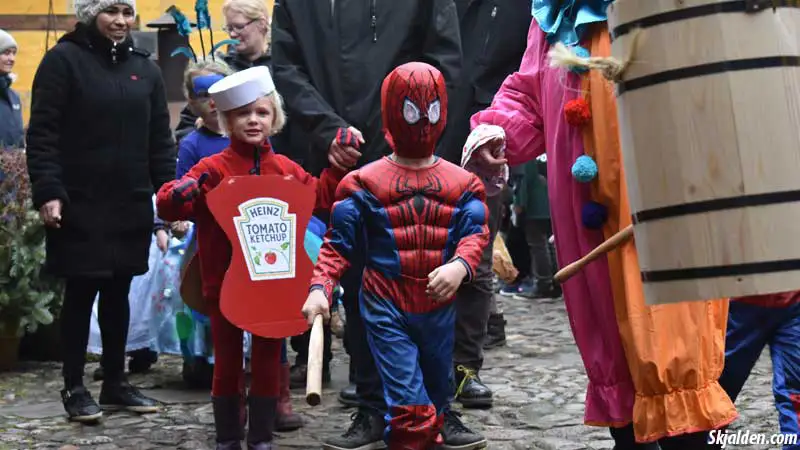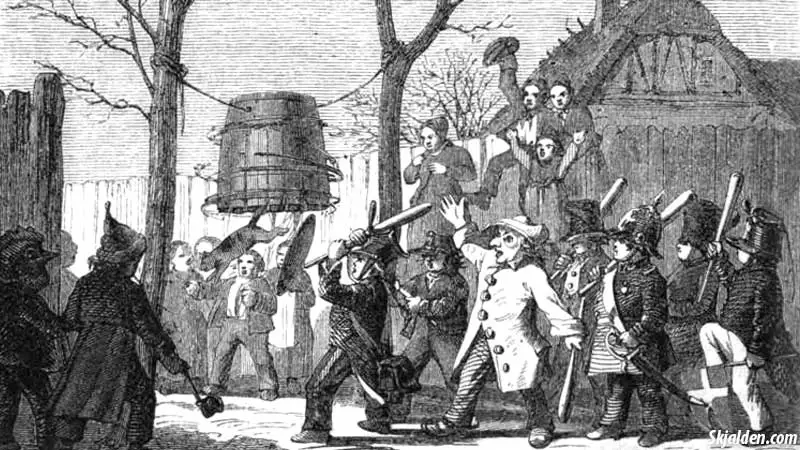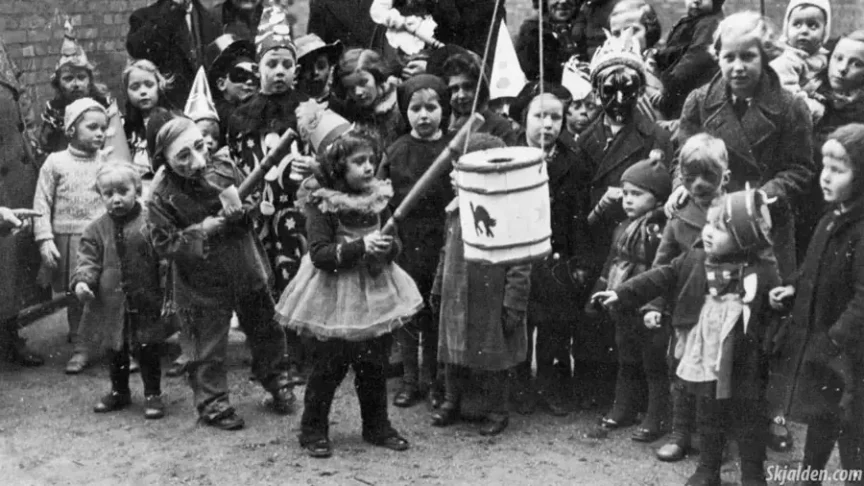Ask any kid in Northern Europe what Fastelavn is, and you’ll see their eyes light up. It’s that funf time of year when they get to put on cool costumes, enjoy a bunch of sweets, and have loads of fun. It’s like their own special festival where the usual rules don’t apply – they can be superheroes or princesses for a day and go on a candy quest. But there’s more to Fastelavn than just dress-up and treats.
What’s Fastelavn All About?
Fastelavn is celebrated in places like Denmark, Norway, Sweden, and Iceland. It’s not just a day, but a tradition woven into the fabric of these countries. It started way back in the day as a kind of last hurrah before the fasting period of Lent. The word ‘Fastelavn’ itself comes from the German ‘fastelabend’, meaning ‘fast evening’.
Back then, people would go all out with the food – think lots of meats and dairy – since they wouldn’t be having these goodies for a while. But it wasn’t just about eating; people would get together, play games, and just enjoy each other’s company.
A Blend of Christian and Ancient Pagan Traditions
Fastelavn is much more than a Christian celebration; it is deeply rooted in pre-Christian customs as well. This festival stands as a testament to the way different cultural practices have come together over the centuries, forming a rich and complex celebration.
In Fastelavn, we see not just the reflection of its Lenten origins but also the echoes of older, pagan traditions. It’s fascinating to see how these diverse elements have woven together over time. The festival becomes a colorful collage of customs, each adding its unique color and texture to the overall celebration.
One of the most intriguing aspects of Fastelavn is the tradition of ‘Fastelavnsris’. This custom, present in Denmark since the 1700s, is a surviving element of these ancient New Year rituals. The ‘Fastelavnsris’, originally branches of willow or birch, were used both as symbols of fertility and as tools for gentle chastisement. In older times, they were traditionally used on women and animals of female gender, believed to awaken their fertility.
By the 19th century, as Fastelavn evolved, these branches started being sold in Danish cities, and adorned for decorative purposes. In the 20th century, this tradition took a sweeter turn, with ‘Fastelavnsris’ being embellished with candies and given as morning gifts to children in the family.
This shift from a fertility symbol to a festive children’s treat illustrates the dynamic evolution of Fastelavn. It shows how ancient rituals were transformed over centuries, adapting to societal changes while retaining a connection to their mystical past.

Fastelavn Nowadays: A Kid’s Dream Day
Fast forward to today, and Fastelavn has become a day kids just can’t wait for. The highlight? Definitely ‘tøndeslagning’ – think of it as a Danish piñata game. Kids take turns whacking a barrel filled with candy until it breaks open.
The child who knocks down the last board of the barrel is honored with the title of ‘kattekonge’, or ‘king of cats’. Even more exciting, the one who manages to strike out the bottom of the barrel, releasing all the candy, is crowned as ‘kattedronning’, or ‘queen of cats’. This playful tradition not only adds excitement to the festivities but also creates a sense of achievement among the children, as they compete for these coveted titles.
Then there are the ‘Fastelavnsboller’, traditional tasty Danish buns filled with cream or jam that everyone – kids and adults alike – absolutely loves. And of course, there’s the dressing up and going door-to-door singing songs for treats or money. It’s a bit like trick-or-treating, and let’s be honest, what kid doesn’t love trick-or-treating?
But what really makes Fastelavn a hit with the young ones is the freedom to just be kids in the most fun way possible. They get to step into the shoes of their favorite characters, collect sweets, and be the center of attention. It’s a day when their laughter fills the air, and the excitement is contagious. From the barrel game to the treat-filled buns, every bit of Fastelavn is designed to bring joy to the little ones.
Regional Variations of Fastelavn Celebrations
While the core elements of Fastelavn are similar across the Nordic countries, each region adds its unique flavor to the celebration. In Norway, for example, Fastelavn is often marked by elaborate costume parades, influenced by the country’s exposure to European carnival traditions. In Sweden, the focus is heavily on culinary delights, especially the ‘Semlor‘, a cardamom-spiced bun filled with cream and almond paste, a much-anticipated treat during the Fastelavn season.
In Iceland, Fastelavn celebrations have a distinct flair, combining traditional elements with local customs. The day is known as ‘Sprengidagur’ (Bursting Day), and it is celebrated with a special meal of salted meat and peas, reflecting the country’s culinary heritage.
Fastelavn has come a long way from its solemn religious beginnings. It’s fascinating to see how this festival has changed over the years. Once a serious event filled with adult-oriented rituals, it has now turned into something that everyone, especially kids, looks forward to. This shift happened gradually, especially in places like Denmark where the Reformation played a big role. The religious angles faded away, making room for a celebration that’s more about having fun together, no matter your age.
From a Real Cat to Candy and Toys
Originally, this tradition had a more literal interpretation than what we see today. In earlier times, specifically up until the 19th century in Denmark, a real cat was actually placed inside the barrel. The idea was that when the barrel was broken, the cat would escape, symbolizing the driving away of evil and misfortune. Fortunately, in Denmark, the cat was allowed to run free once the barrel was broken.
This practice varied in its severity across different regions. In some places, like Germany, the tradition, known as ‘Katzenschlagen’, was less fortunate for the cat, which was often not spared, due to its association with bad omens or evil spirits.

Over time, the perception of this tradition changed, leading to a more humane approach. Real cats were replaced with figures or dolls of cats in the barrels. This shift not only reflected a change in societal attitudes towards animal welfare but also transformed the tradition into a more child-friendly game.
A significant part of this tradition is the title bestowed upon the person who successfully hits the cat out of the barrel. In the past, the individual who achieved this feat was named the ‘cat king’. This part of the tradition has survived through the ages and continues to be a celebrated aspect of Fastelavn festivities.
Fastelavn Dates to 2050: Keep Your Calendars Ready!
Fastelavn isn’t on the same date every year, so it’s handy to know when it’s coming up. Whether you’re planning a party or just want to know when to get your costume ready, here’s a list of Fastelavn dates all the way to 2050:
2024: Sunday, February 11
2025: Sunday, March 2
2026: Sunday, February 15
2027: Sunday, February 7
2028: Sunday, February 27
2029: Sunday, February 11
2030: Sunday, March 3
2031: Sunday, February 23
2032: Sunday, February 8
2033: Sunday, February 27
2034: Sunday, February 19
2035: Sunday, February 4
2036: Sunday, February 24
2037: Sunday, February 16
2038: Sunday, February 1
2039: Sunday, February 21
2040: Sunday, February 13
2041: Sunday, March 2
2042: Sunday, February 15
2043: Sunday, February 7
2044: Sunday, February 27
2045: Sunday, February 12
2046: Sunday, February 25
2047: Sunday, February 17
2048: Sunday, February 9
2049: Sunday, February 28
2050: Sunday, February 20
